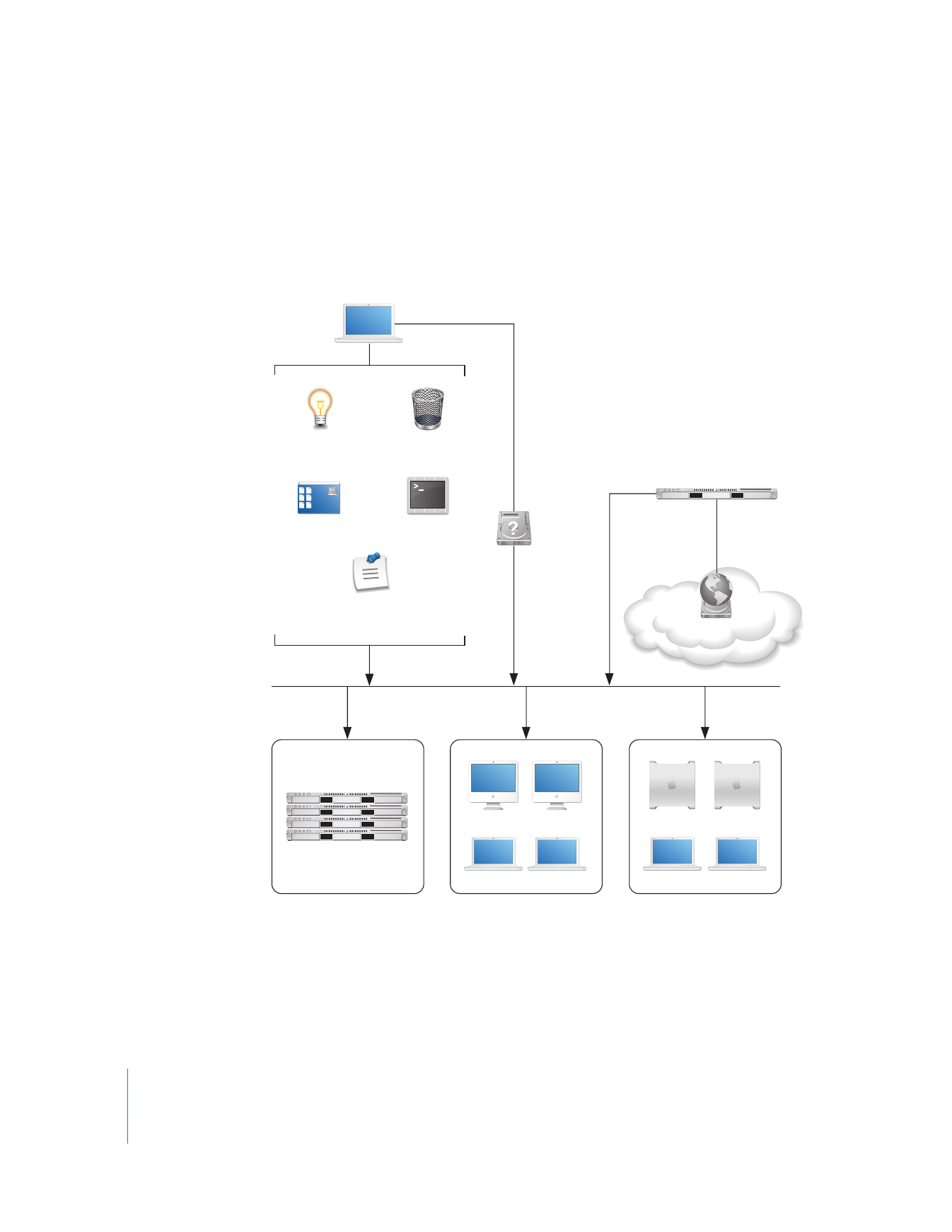
Housekeeping
Apple Remote Desktop provides several ways to remotely control client computers for
housekeeping activities, which you can conduct using one or more Apple Remote
Desktop windows.
Xserve cluster node
Marketing department
Engineering department
NetBoot
images
Set
startup
disk
Administrator
computer
Mac OS X Server
Execute UNIX
shell script
Restart, shut down,
sleep, and start up
Empty
Trash
Remote screen
control
Send text
notification

Chapter 1
Using Apple Remote Desktop
23
Managing Power State
Use Apple Remote Desktop to control the power state of client computers.
For example, you may need to have all computers turned off during maintenance of a
power generation unit or during a holiday shutdown. You can send an Apple Remote
Desktop text message reminding users to shut down their computers at a particular
time. Any computers still running when you need to start maintenance can be
detected and shut down remotely with Apple Remote Desktop.
Locking Computer Screens
You can lock the screens of client computers for specified durations when you don’t
want the computers to be used. For example, you may need to perform network
maintenance and want to make sure computers don’t use the network for a few hours.
You can display custom pictures or text messages on locked computer screens to let
users know when the computers are available again.
Reclaiming Disk Space
Periodically empty the Trash on client computers to conserve disk space.
Automating Periodic Maintenance
Use AppleScript and UNIX shell scripts to automate periodic maintenance, such as
checking permissions or deleting log files.
Controlling Screens
Use Apple Remote Desktop’s remote screen control to perform activities on the
desktop of Xserve computers, or use graphical applications on them. Apple Remote
Desktop replaces the need for KVM (keyboard-video-mouse) switches for accessing
Xserve computers without a monitor attached.
You can also remotely control a user’s computer to help determine reasons for slow
performance or other problems.
Changing Startup Disks
Change the startup disk of a client computer to perform diagnostic or troubleshooting
activities.
For example, start up a computer using a server-based NetBoot image that’s been
set up for troubleshooting. When you’re finished, reset the startup disk to the original
boot volume.
Managing Shared Computers
On computers that are shared among users, check for files that need to be deleted,
close applications, log users off, or perform other activities needed to prepare
computers for the next users.

24
Chapter 1
Using Apple Remote Desktop